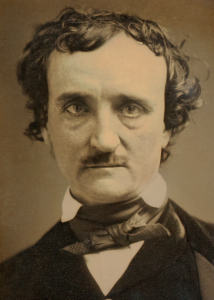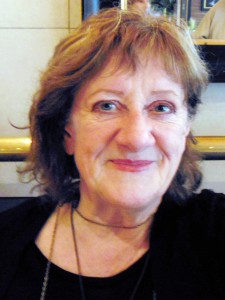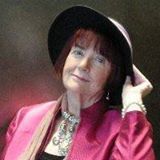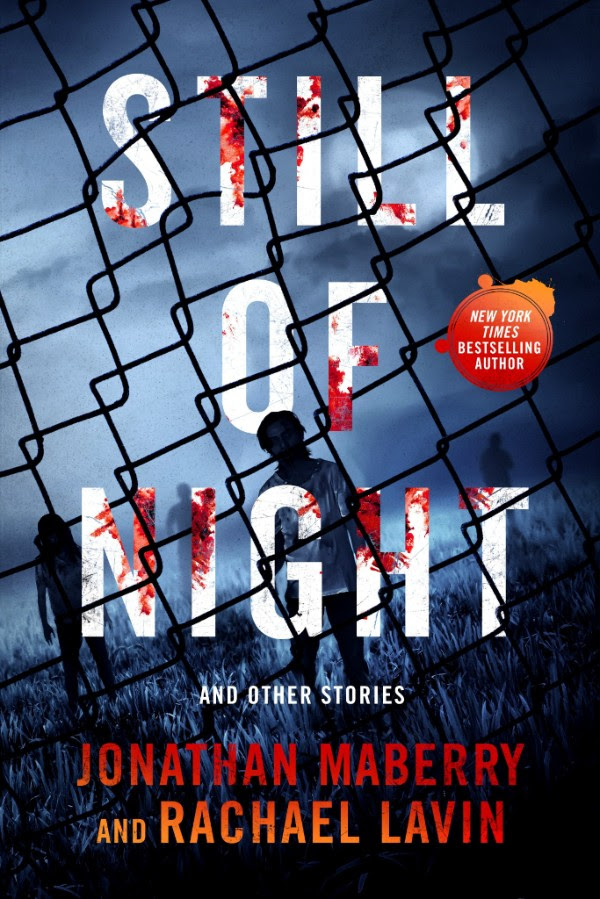Today on Horroworld, co-editors Nancy Kilpatrick and Caro Soles stop by to discuss nEvermore! Tales of Murder, Mystery and the Macabre (Hades Publication, an EDGE imprint) – their recent anthology honoring and inspired by the legacy of Edgar Allen Poe. nEvermore! features 22 tales blending supernatural and mystery inuniqug reimagining of Poe’s stories. Currently an e-book exclusive until September 30, the paperback version of the anthology will be released on October 1 (USA) and September 1 (Canada). Join us as we discuss Mr. Poe’s enduring presence in American horror, how to ‘wow’ an editor, and even how Indiegogo played a role in bringing the master back out of the shadows.
 HORRORWORLD: First things first, why Edgar Allen Poe? Although his place in American literature is undeniable, what is it about his legacy that you wanted to reexamine and bring into the 21st Century?
HORRORWORLD: First things first, why Edgar Allen Poe? Although his place in American literature is undeniable, what is it about his legacy that you wanted to reexamine and bring into the 21st Century?
Nancy Kilpatrick: It’s little known that Poe was a writer who crossed genres. He adamantly refused to classify himself. People know him mainly for “The Raven” and also for a handful of his dark tales, the ones they read in school and those adapted to film. In fact, Poe is considered the father of the modern detective story and even Arthur Conan Doyle often paid homage to him as an inspiration for his work, including Holmes and Watson. We wanted to bring Poe into the light as a genre-crosser. My field is horror/dark fantasy, and Caro is the mystery side of this collaboration. We asked writers of horror/dark fantasy to include a mystery element, and mystery writers to add something dark and supernatural. This, to my knowledge, hasn’t been done before. We could have expanded to other genres, but of course there’s only one book of a limited number of pages. In truth, the work of many writers–including Jules Verne and H.G. Wells–can find roots in Poe’s oeuvre.
Caro Soles: The deciding factor for me is that Poe himself united in his stories both mysteries and the darkest of fantasies, thus combining our literary strengths and interests. Besides, everyone loves Poe.
HW: Where, if anywhere, do you see Poe‘s influence in your own work? Do you see his ink-stained fingerprints in any specific places in current literature or entertainment?
NK: I see Poe and Lovecraft as the two driving forces in darker lit and film. Between these writers, they covered pretty well everything that makes up this genre and there is little that surfaces where you can’t see their influence.
Poe was a genius at expressing the darker and denser emotions. This is probably why the world loves him. Most writers skim over heavier emotions–even in the horror field, which relegates a lot of fiction and film to one-emotion only: fear. But Poe delved right in and lived in the literary mire of grief and madness and longing. We owe him a great deal, especially in this tricky world we live in now where it’s very hard to be emotionally honest without a social media lambasting. Poe was honest. He couldn’t put on a happy face and talk the happy talk. And he expressed the emotions he penned unapologetically. He would likely have been reviled today, opinionated and emotive as he was. Thank God we have him as a reference for what human beings have always felt deeply: sadness; grief; rage; resentment; bitterness; alienation and love, mainly lost love. We’ll probably need to remember that such a person, such a time existed in the social apocalypse many are anticipating and from which we are currently watching tendrils emerge.
My own writing is very dark and full of heavy emotions as well, especially my short fiction, but some novels as well. It’s where I’m most comfortable creatively. Of course, I’ve written some humor. Black humor!
CS: I can’t point to any novel or story of mine and say “Look! See that? Do you spot the Poe influence?” But I grew up surrounded by books and was read the Poe poems and stories at an early age, so I know it’s there! There has been quite the renaissance lately of Poe-centric stories, novels and even a musical called Nevermore!, which Nancy and I enjoyed in New York this year. His influence continues.
HW: nEvermore! is organized as an homage to Poe, but an homage is something other than an imitation. Of all the stories that you read and selected, what did the successful ones to pay tribute to Poe while still bringing something new to the table?
NK: Many of the writers wanted to riff on a Poe story or poem, which was fine with us. Amazingly creative fiction emerged. We have some delightfully refreshing takes on Annabel Lee; The Murders in the Rue Morgue; The Lighthouse; The Cask of Amontillado. But we also have stories that are not riffs but Poe-like ideas. What every story in the anthology brings–and trust me, they wouldn’t be in the anthology if they didn’t–is a sense of Poe so that readers will think, hey, that feels like Edgar Allan Poe’s work! We wanted to do this without replicating Poe’s voice and in fact only one story more or less does that, and so perfectly, while revisiting the original story, that we fell in love with this tale right away. We were looking for that blend of horror and mystery, dark, darker, darkest. And while the writers had Poe–whom they all adore, of course–in mind, their idea was to use him as inspiration which, I believe, Poe would have valued.
CS: We ended up with several types of stories: the ones riffing on an actual Poe story in a modern setting and the ones pulling in the themes often used by the master himself, like revenge, obsession, madness taken to an extreme and such. Within the first group some links are quite obvious, while others much less so. But they all have that certain something that feeds on our fears and hopes, that draws us in to its surprising but inevitable conclusion.
HW: One of Poe’s theories is the “Unity of Effect,” from his essay “The Philosophy of Composition.” While this is certainly not the only method for writing a short story, what is your feeling on this approach? Is it something you took into consideration while putting together this anthology (either in the individual stories or, maybe, even in the overall collection)?
NK: In this piece, Poe is analyzing his poem “The Raven”, and I certainly admire his ability to so analyze. Personally, and with many of the writers I know, this type of analysis does not go hand in hand with writing, which maybe is why none of us have written anything akin to “The Raven”. LOL! But, as you say, there are many ways to write. What I think is important here is the idea of an overview and the parts that compose the larger view fitting together coherently. Most writers do that in the rewrite stage. Certainly that comes into play when editing an anthology.
 Usually for an anthology I begin with an idea, in the case of nEvermore! the idea Caro and I had is as I’ve said above. With that big view, obviously stories that came in had to fit that vision. But at the same time, stories do twist and turn the vision because creativity doesn’t fit into a standardized slot–fortunately!–and that changes the vision, to a greater or lesser extent.
Usually for an anthology I begin with an idea, in the case of nEvermore! the idea Caro and I had is as I’ve said above. With that big view, obviously stories that came in had to fit that vision. But at the same time, stories do twist and turn the vision because creativity doesn’t fit into a standardized slot–fortunately!–and that changes the vision, to a greater or lesser extent.
Being a writer and editor, and a reader, I have an intuitive feel for what works and what doesn’t in terms of the overview. As an anthologist, I sense what fits and what doesn’t fit with the theme of the work I’m compiling.
There are always, of course, good stories on the edge of the theme and those are put aside for further consideration. Sometimes the whole of the work shifts so that a story that came in at the beginning but was on hold now fits perfectly. And sometimes it goes the other way. The view of the whole is always in my mind, but I don’t have Poe’s brain or possess much in the way or analytical abilities. I really go by feel and trust my intuition a great deal–it hasn’t failed me yet.
CS: With an anthology, while we the editors have a fairly clear idea of what we want, we can never be absolutely certain what the book will be like until we get all the stories handed in. In this case, most of the stories came in from the big name writers we had invited, and although the writers may have given us an idea of what sort of story it would be… Well, one never knows. After the invited stories were in, we read the ones submitted to our contest and chose them according to how they fit what we had. We wanted variety! So to answer your question from my point of view, this system of starting from the end so you know where you are going makes no sense in this context. It would not work for an anthology.
H2: How was the process of working together to edit the anthology? What kind of different sensibilities did you each bring to the table?
NK: Caro and I have known one another for ages–in our salad days we were in a long-running writers’ workshop together. We are both aware that my strengths are her weaknesses, and my weaknesses are her strengths. There are, of course, areas where we both are strong, for instance, editing short stories. But there was a lot of work involved and different jobs required different skill sets. Caro is terrific with visuals. She found the raven image and she has also done a lot of the promo images. I’m good at soliciting and at promotion and she finds that the horrifying end. As to Poe, we both adore his work and know quite a bit about his life. When we decided to do a project together after all these years of being friends, Poe was the one writer whose work touched both of our realms–horror/dark fantasy (me) and mystery (Caro). It’s been a good blend. And hey, we’re still friends! That says a lot.
CS: We have known each other for a long time, have travelled together, been on the same panels at conventions, even done a book tour together for our respective books but it is the first time we have worked together on a project. I think it is going very well. I am better visually and technically than she is so did much of the prep work in setting up the Indiegogo site, PayPal, our Twitter account and our website (http://www.nevermoreantho.com). Nancy provided much of the content and checked it all for spelling and such. I am only good at spelling in Latin! Also I am more of a big picture sort of person. Nancy is more detail oriented. And she is really good at setting up tour dates and travel plans! We both are good at substantive editing but she catches more problems in copy edits. Surprisingly we had few real disagreements about the stories, though I liked a few better than she did and vice versa. Somehow we have managed not to come to blows. So far.
HW: In its nascent stages, nEvermore! had a successful Indiegogo campaign. What are your thoughts on the role of crowd-funding in the current literary environment? Do you have any advice for others that might be considering this as an avenue of funding?
NK: Tons of advice. They should email me! LOL! We knew there would be work involved but not how much work! We did it alone with one hired person to tweet–I wasn’t on Twitter then (I am now) and while Caro was, she wasn’t sure how to use it effectively. Promoting crowdfunding is difficult and if you work with a team that should help, everyone doing different things to get the word out. And, btw, it’s awfully hard to advertise a crowdfunding on Facebook, where most groups, private or public, stipulate NO ADS and will remove yours, no matter how subtly worded or how much the ‘product’ complements the group’s theme.
I think today, with the massive flux publishing is experiencing, and with sales down, even for best-selling authors, one has to do everything possible to sell a book. No one has any sure-fire methods anymore. It’s never been harder. And because of this, money has never been tighter. We crowdfunded to pay the authors a very good rate. As a writer, I’m sick of the ‘professional rates’ offered, rates of pay that have been around since the 1930s. I’m old enough to remember getting very good rates of pay for short fiction in the 80s and early 90s. I think it’s a real shame that publishers can’t offer what they once did, but sales aren’t what they were. Lovers of literature are often eager to support a project and every $5 or $10 helps in the long run to reach the campaign goal.
CS: I think crowdfunding is going to play a bigger role in publishing as we go along. It was all new to us and at the time I knew about only one other campaign like ours. Since then I have seen others and found out about one or two small presses who do this on a regular basis.
As for advice — don’t do it unless you have a real go- getter energetic team all with large and minimally interconnecting circles. We had only us. And it was a great deal of work. Every day! Much more than we realized! Thanks to Nancy we had some wonderful “perks” as gifts to those who donated at the different levels and these helped a lot. I am sure some people donated just to get them.
HW: As authors and award-winning editors, what advice do you have for readers who are looking to have their short fiction published? What is it that makes certain works stand out from the rest?
NK: Everyone says ‘good writing’, but it’s true. If a story is sloppily written, it better have an unusual plot that sparkles, or it will be rejected. Writers work with words; these are our tools. It’s up to the writer to learn language–which is an ongoing, lifetime vocation–and to read enough that there is a very good understanding, a feel, for how stories are put together, what makes them work or not work, and that coupled with knowledge of what has been done before.
I want to be wowed. Again, this comes down to the author having read. There are writers who have an idea for a story but they haven’t read in the genre they are writing in, or read enough, or read what has come before, so they end up rehashing an idea that has been done to death, and they just don’t know it. For any editor who is well read, such a story would be boring because the idea isn’t fresh. Once you read in a realm you become surprised at how much ground has been covered. That shouldn’t deter a writer, it should spark new ideas–that’s what creativity is about, the epiphany of a new idea and the craft of weaving a story from the threads, one which hasn’t been woven in that particular pattern before. Someone once went through Shakespeare and determined there are only 36 plots extant. No plot is original, but how the writer tells the story is what makes it refreshing.
CS: There is something undefinable about good writing that just jumps off the page. But that said, there is more to writing a story than good writing. Several of the competition stories were very well written as far as language and imagery and atmosphere are concerned, but the authors tended to lose track of the story in the middle and we were left wondering, “What is this really about? What are you trying to say?” It is easy at times to get caught up in style and lose track of content.
HW: What’s coming next for you? What projects are on the horizon, either individually or together?
NK: We don’t have anything planned as a collab atm. But we are doing a ton of promotion for nEvermore! this fall, including a signing at the Poe Museum in Richmond, and at Dark Delicacies in December. The list of events is on our website and we’re updating as details are finalized: nEvermoreantho.com
Work-wise, I’m finishing a novel. I’ve spent the last few years editing anthologies and writing short stories, working on this anthology for almost two years, and amidst that a million other things like teaching courses, selling my home, and getting through the end of a long relationship. So, it’s taken me a while to get back to this half-finished novel, and there are two editors waiting to read it and the plan is to get it into their hands before they leave publishing or die! I’m also cataloging my vampire book collection with the idea of finding it a new home before I move next June. Anybody want to buy 2500 vampire books?
CS: Our next project together will probably be flying somewhere warm next winter. After that I hope to get back to work on the final push for my historical mystery novel Meeting Mr. Nijinsky, which has been teetering on the edge of the nest long enough. Then I can get on to my mystery novella series Kensington Sam, about an injured, pain-killer-addicted bike courier and his red haired girlfriend who may or may not really exist.
 Nancy Kilpatrick is a writer and editor with 18 novels and over 225 short stories in print. In her editorial capacity, nEvermore! is her 15th anthology. She enjoys wearing two hats and exploring both hemispheres of her brain. She won the Arthur El- lis Award for Best Mystery Story, and several awards for her dark fantasy writing and editing, including the Paris Book Festival’s Best Anthology of the Year for Danse Macabre.
Nancy Kilpatrick is a writer and editor with 18 novels and over 225 short stories in print. In her editorial capacity, nEvermore! is her 15th anthology. She enjoys wearing two hats and exploring both hemispheres of her brain. She won the Arthur El- lis Award for Best Mystery Story, and several awards for her dark fantasy writing and editing, including the Paris Book Festival’s Best Anthology of the Year for Danse Macabre.
 Caro Soles is the founder of Bloody Words, Canada’s biggest annual mystery convention. Her work includes mysteries, erotica, gay lit and science fiction. She received the Derrick Murdoch Award from the Crime Writers of Canada for her work in the mystery field and was short listed for the Lambda Literary Award.
Caro Soles is the founder of Bloody Words, Canada’s biggest annual mystery convention. Her work includes mysteries, erotica, gay lit and science fiction. She received the Derrick Murdoch Award from the Crime Writers of Canada for her work in the mystery field and was short listed for the Lambda Literary Award.
- Interview with Michael Griffin, Author of ‘The Human Alchemy’ - August 13, 2018
- Interview – Nancy Kilpatrick and Caro Soles, eds. “nEvermore!” - October 1, 2015
- Interview – Angeline Trevena, author “Cutting the Bloodline” - May 22, 2015
- Interview – Rob E. Boley, author of the “Scary Tales” series - May 21, 2015
- Interview – Nancy Kilpatrick, ed. “Expiration Date” - May 15, 2015
- Interview – Mark Miller, “Books of Blood” Motion Book - April 10, 2015
- Interview – Ben Meares, “Books of Blood” Motion Book - April 3, 2015
- Interview – Christian Francis, “Books of Blood” Motion Book - March 27, 2015
- Interview with L. Andrew Cooper, Author of “Leaping at Thorns” - March 20, 2015







